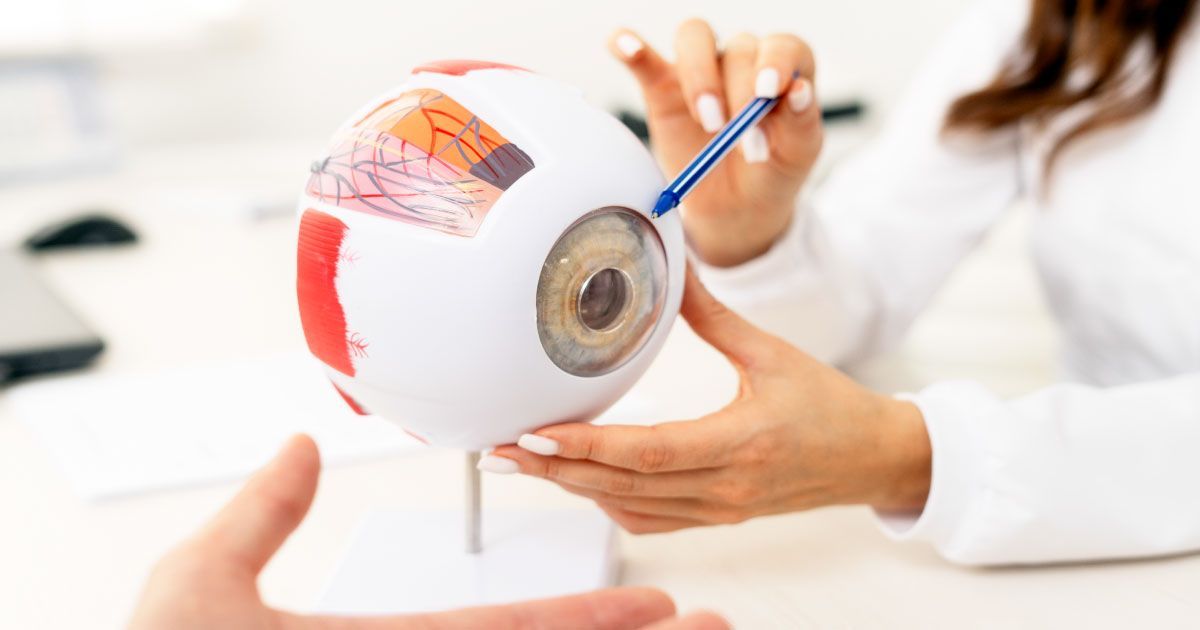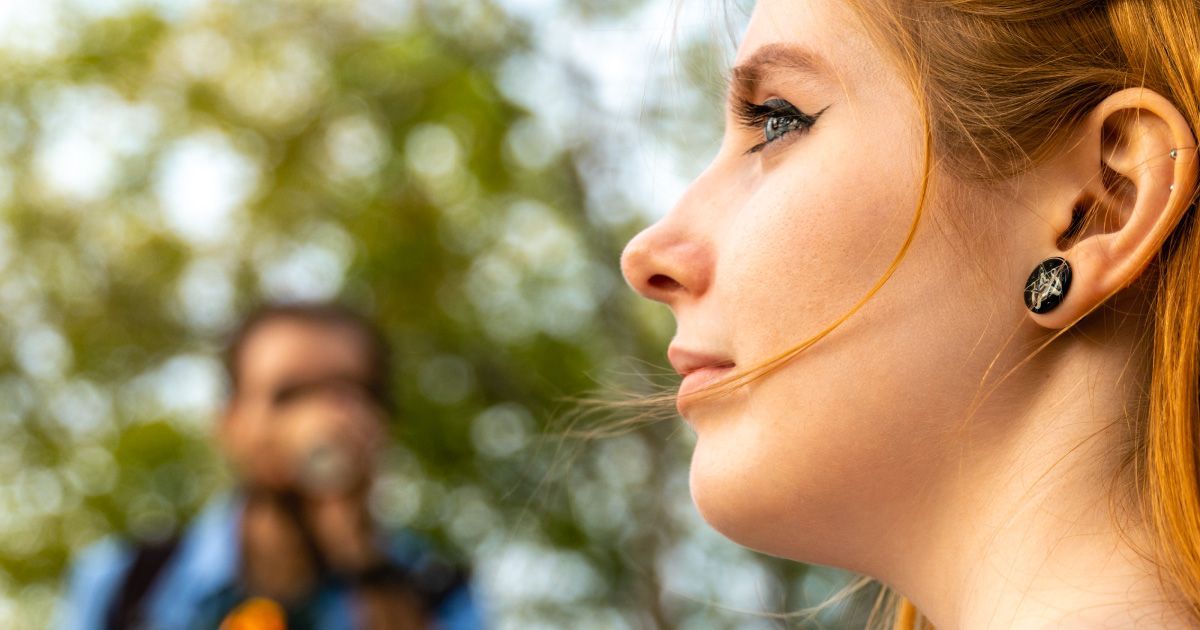Understanding the Tear Meniscus: A Key Indicator of Eye Health

Read time: 4 minutes
The tear meniscus is a small but essential structure in the eye, playing a critical role in maintaining a healthy ocular surface. Often overlooked, this thin strip of tear fluid located along the margin of the lower eyelid serves as a reservoir that helps keep the eye moist and comfortable. It is also a useful diagnostic feature for eye care professionals assessing tear production and overall tear film stability.
What Is the Tear Meniscus?
The tear meniscus is the crescent-shaped curve of tear fluid that forms at the junction between the lower eyelid and the surface of the eye (the conjunctiva and cornea). A smaller upper tear meniscus also exists along the top eyelid, but the lower meniscus is more visible and commonly evaluated in clinical settings. It acts as a temporary holding area for tears that are spread across the eye’s surface during blinking.
This tear reservoir plays several roles. It supplies the precorneal tear film - the thin layer of moisture covering the cornea—and helps flush out debris and distribute nutrients and oxygen to the eye surface. It also contributes to the eye’s defense mechanisms by containing antibacterial compounds like lysozymes and immunoglobulins.
Tear Meniscus and Tear Film Dynamics
The tear film itself is made up of three layers: a mucous layer that adheres to the ocular surface, an aqueous (watery) layer that provides hydration and nutrients, and an outer lipid layer that helps prevent evaporation. The tear meniscus contains mainly the aqueous layer and is an important part of the tear distribution and drainage system.
When the eye blinks, the eyelids spread tears from the meniscus over the ocular surface, maintaining a smooth optical surface and ensuring consistent moisture. Between blinks, the tears gradually drain into the lacrimal puncta—small openings in the eyelids that lead to the tear drainage system.
Measuring the Tear Meniscus
Your Urban Optiks eyecare professionals can assess tear volume and tear film stability by measuring the tear meniscus. A healthy tear meniscus typically measures about 0.2 to 0.4 millimeters in height. When the tear meniscus appears reduced in size, it may indicate conditions such as dry eye disease (DED), where tear production is insufficient or evaporation is excessive.
Various diagnostic tools can be used to evaluate the tear meniscus including:
- Slit-lamp Biomicroscopy: allows the eye doctor to visually estimate tear height
- Optical Coherence Tomography (OCT): measures tear volume and meniscus curvature with high precision
- Fluorescein Dye: is applied to highlight the tear film and help observe its distribution and drainage
Why You Might Need a Tear Meniscus Test
Testing the tear meniscus is important for evaluating eye surface hydration and tear film stability, which are critical for clear vision and overall eye comfort. Here are key reasons why an eye care professional might recommend this test:
- Dry Eye Symptoms: If you're experiencing dryness, irritation, burning, or a gritty sensation in your eyes, a reduced tear meniscus height may help confirm dry eye disease (DED).
- Tear Production Assessment: The tear meniscus test can determine if your eyes are producing enough tears or if they're evaporating too quickly.
- Monitoring Chronic Eye Conditions: For patients with known dry eye or autoimmune conditions like Sjögren’s syndrome, tear meniscus measurements help monitor disease progression and treatment effectiveness.
- Post-Surgery Evaluation: After eye surgeries like LASIK or cataract surgery, assessing tear film function, including the meniscus, ensures proper healing and comfort.
- Contact Lens Discomfort: Inadequate tear volume can cause discomfort or poor lens fit; testing the tear meniscus can help identify if tear deficiency is the cause.
- Treatment Planning: Accurate measurement helps tailor treatment strategies, such as artificial tears, prescription eye drops, or procedures like punctal plugs.
Testing the tear meniscus offers valuable insight into tear quantity and quality, guiding diagnosis and personalized care for better eye health.
Tear Meniscus and Dry Eye Disease
The tear meniscus is particularly important in diagnosing and monitoring dry eye disease, a common condition characterized by a deficiency in tear production or an imbalance in tear film components. A reduced or irregular tear meniscus height can signal inadequate tear volume, which often correlates with symptoms like burning, irritation, fluctuating vision, or a feeling of grittiness in the eyes.
In some cases, a high tear meniscus may indicate excessive tearing (epiphora), which can occur due to blocked tear ducts or reflex tearing in response to ocular surface irritation. Therefore, the tear meniscus not only reflects tear quantity but can also point to underlying problems with tear drainage or ocular surface health.
You can refer to our blog, Understanding Dry Eye Evaluations: Tests and Procedures for Relief, for more information.
The Takeaway
The tear meniscus, though a small and subtle structure, provides valuable insight into the health of the eye's surface and tear production system. Understanding its function and appearance helps your Urban Optiks eyecare professionals diagnose conditions like dry eye disease and monitor the effectiveness of treatments. With advances in ocular imaging and diagnostics, the tear meniscus continues to be a reliable marker for evaluating and supporting optimal eye health.
Share this blog post on social or with a friend:
The information provided in this article is intended for general knowledge and educational purposes only and should not be construed as medical advice. It is strongly recommended to consult with an eye care professional for personalized recommendations and guidance regarding your individual needs and eye health concerns.
All of Urban Optiks Optometry's blog posts and articles contain information carefully curated from openly sourced materials available in the public domain. We strive to ensure the accuracy and relevance of the information provided. For a comprehensive understanding of our practices and to read our full disclosure statement, please click here.


















